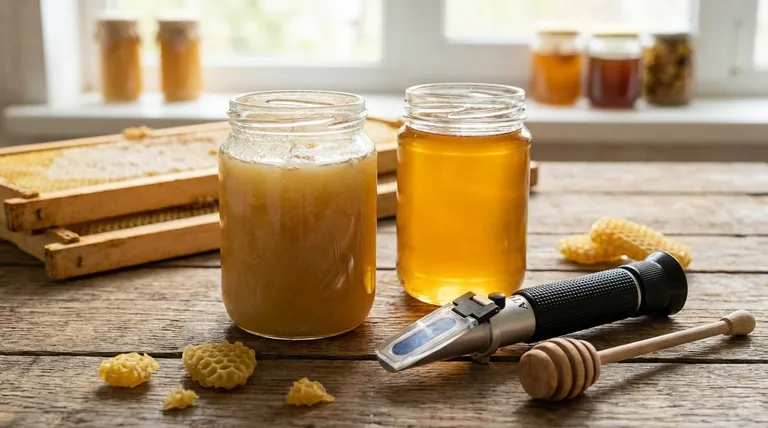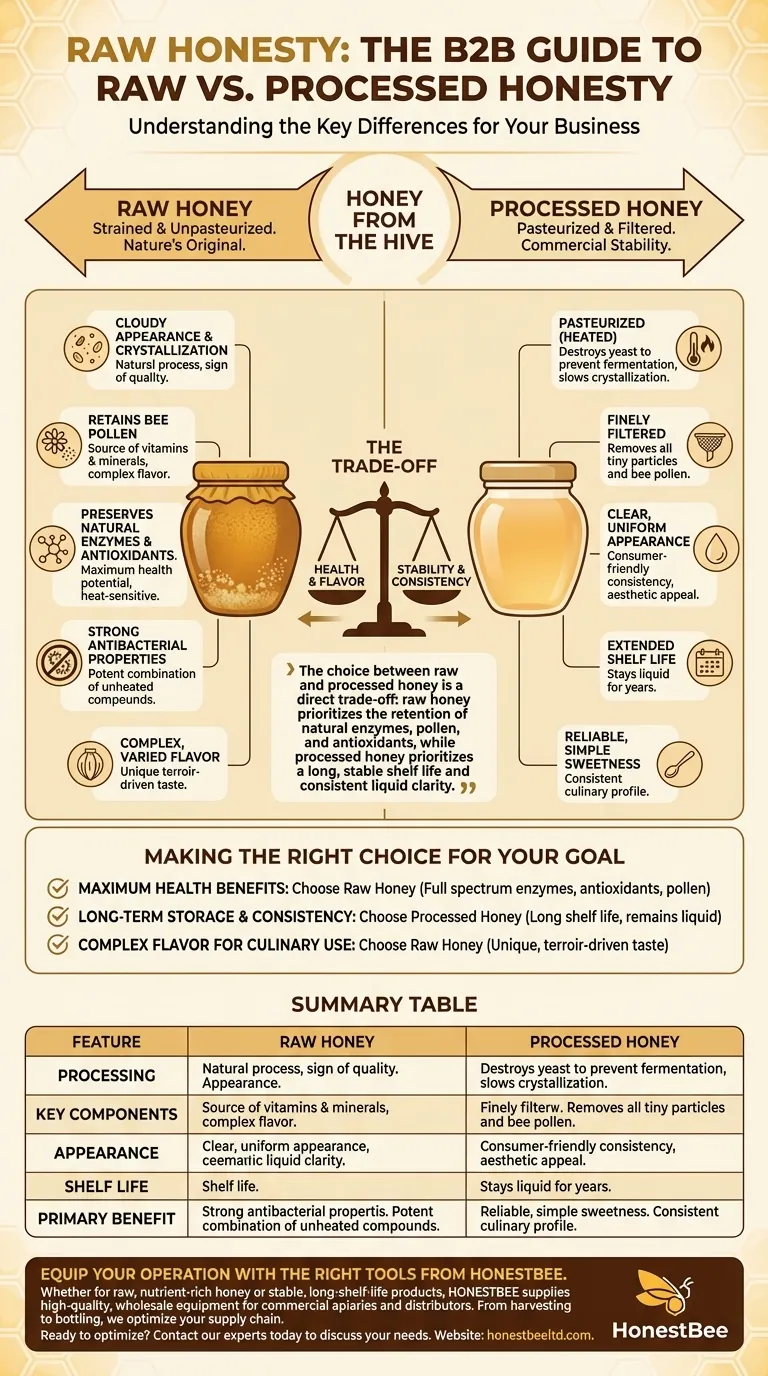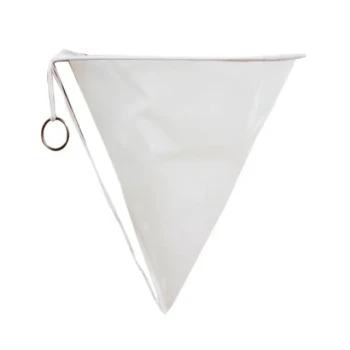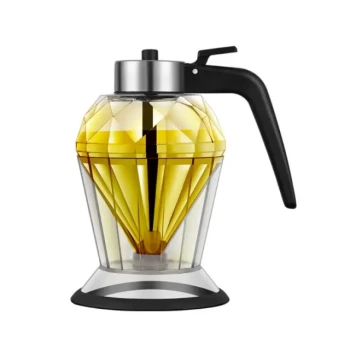The fundamental difference between raw and processed honey lies in two key actions: filtration and pasteurization. Raw honey is honey as it exists in the hive, containing natural particles like bee pollen and enzymes. Processed honey is heated (pasteurized) and finely filtered to remove these elements, resulting in a clearer, smoother product with a much longer shelf life.
The choice between raw and processed honey is a direct trade-off: raw honey prioritizes the retention of natural enzymes, pollen, and antioxidants, while processed honey prioritizes a long, stable shelf life and consistent liquid clarity.

What Defines "Raw" vs. "Processed"?
Understanding the journey from the beehive to your shelf clarifies the distinction between these two products. Each step is purposeful and results in a fundamentally different end product.
The State of Raw Honey
Raw honey is best described as honey in its most natural state. It is typically strained to remove large debris like beeswax or dead bees but is not finely filtered.
This lack of processing means it retains beneficial compounds like bee pollen, enzymes, and antioxidants. Its appearance is often cloudy or opaque, and it tends to crystallize much more quickly.
The Methods of Processing
Processed honey undergoes two main steps that raw honey does not. The first is pasteurization, a process of heating the honey to high temperatures.
This heating destroys yeast cells, which can cause fermentation, and slows the process of crystallization. The second step is filtration, which removes all tiny solid particles, including the valuable bee pollen, to create the clear, uniform look consumers often expect.
The Impact on Health and Nutrition
The primary motivation for choosing raw honey often revolves around its potential health benefits, which are significantly altered during processing.
Enzymes and Antioxidants
Raw honey contains natural enzymes and a higher concentration of antioxidants, which help protect the body from cell damage. Pasteurization, the heating process used for most commercial honey, can degrade or destroy these heat-sensitive compounds.
Antibacterial Properties
The natural antibacterial properties of honey are stronger and more robust in its raw form. The combination of enzymes and other natural substances is most potent when left unheated and unaltered.
The Role of Bee Pollen
Bee pollen, a source of vitamins, minerals, and amino acids, is completely filtered out of processed honey. In raw honey, these microscopic particles remain, contributing to both its nutritional profile and its richer flavor.
Understanding the Trade-offs
The decision to process honey is driven by commercial and practical considerations, not a desire to create an inferior product. Understanding these reasons helps you make an informed choice.
Why Process Honey at All?
The main drivers for processing are shelf life and consumer aesthetics. Pasteurization and filtration prevent fermentation and crystallization, allowing honey to remain liquid and visually appealing on a store shelf for years. This consistency is a key goal for large-scale producers.
Crystallization is Not Spoilage
Many consumers mistake crystallized honey for spoiled honey. In reality, crystallization is a natural process and a sign of high-quality, raw honey. It occurs because the glucose in the honey separates from the water and can be easily reversed by gently warming the jar in warm water.
Flavor and Appearance
Processed honey has a uniform, consistent sweetness. Raw honey, because it contains pollen and is sourced from specific blossoms, has a much more complex and varied flavor profile. Its appearance is less clear, but this reflects its unprocessed, natural state.
Making the Right Choice for Your Goal
Ultimately, neither type of honey is "bad," but they serve different purposes. Your personal goal should guide your decision.
- If your primary focus is maximum health benefits: Choose raw, unfiltered honey to retain the full spectrum of enzymes, antioxidants, and pollen.
- If your primary focus is long-term storage and consistency: Processed honey offers a significantly longer shelf life and will remain smooth and liquid.
- If your primary focus is complex flavor for culinary use: Raw honey provides a unique, terroir-driven taste that can enhance dishes, while processed honey provides reliable, simple sweetness.
By understanding these core differences, you can confidently select the honey that best aligns with your priorities for health, taste, and use.
Summary Table:
| Feature | Raw Honey | Processed Honey |
|---|---|---|
| Processing | Strained only; not pasteurized or finely filtered. | Pasteurized (heated) and finely filtered. |
| Key Components | Retains natural bee pollen, enzymes, and antioxidants. | Pollen and many heat-sensitive enzymes are removed. |
| Appearance | Cloudy or opaque; crystallizes quickly. | Clear, smooth, and remains liquid for a long time. |
| Shelf Life | Shorter due to natural crystallization. | Significantly longer and more stable. |
| Primary Benefit | Maximum potential health benefits and complex flavor. | Long-term storage stability and consumer-friendly consistency. |
Equip Your Operation with the Right Tools from HONESTBEE
Understanding the nuances of honey is crucial for producing and selling a quality product. Whether your commercial apiary focuses on raw, nutrient-rich honey or your distribution business requires honey with a stable, long shelf life, having the right beekeeping supplies is the first step.
HONESTBEE supplies commercial apiaries and beekeeping equipment distributors with the high-quality, wholesale-focused equipment needed for success—from harvesting and filtering to storage and bottling.
Ready to optimize your honey production and supply chain? Contact our experts today to discuss your specific needs and discover how our supplies can help you meet market demand efficiently.
Visual Guide

Related Products
- Precision Honey Refractometer Instrument for Quality Assessment
- 10L Stainless Steel Electric Honey Press Machine
- HONESTBEE 3-Frame Manual Acrylic Honey Extractor
- Plastic Hand Crank 2 Frame Honey Extractor Low Price
- 24 Frame Honey Extractor Commercial Radial Honey Frame Extraction Machine
People Also Ask
- What are the key steps to using a honey refractometer? Ensure Honey Quality & Prevent Fermentation
- Why is a honey refractometer important for beekeepers? Ensure Quality and Prevent Fermentation
- What is a honey refractometer and what is its purpose? Ensure Honey Quality and Prevent Spoilage
- Why is a honey refractometer considered essential for commercial beekeepers? Ensure Honey Quality and Profitability
- How does a honey refractometer work? Ensure Honey Quality & Harvest Readiness



















